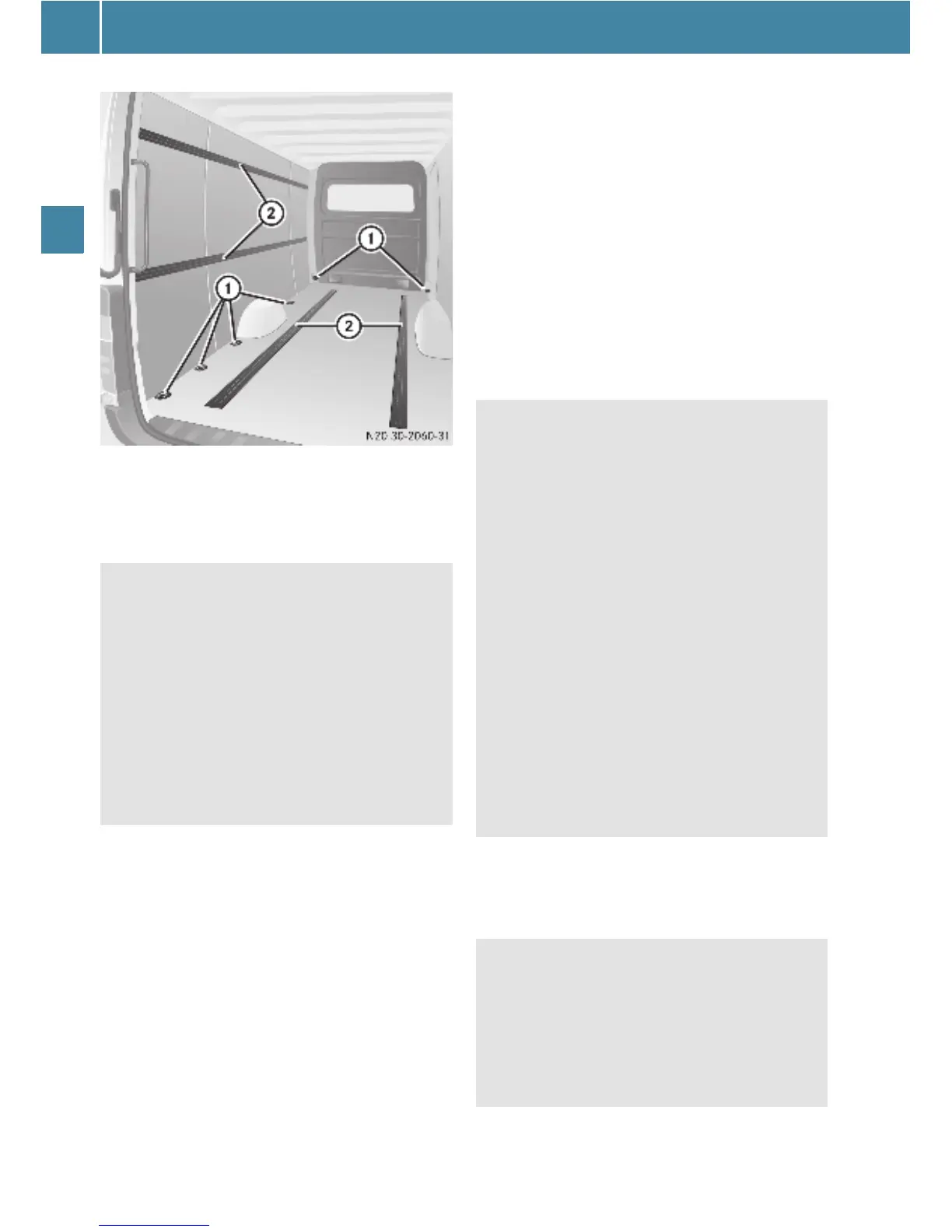Transporting
138
Controls in detail
Lashing points (example illustration of pan-
el van)
1 Lashing eyes
2 Load rails
i Loose loads should be secured with an ap-
proved lashing net or tarp.
E Always attach the lashing net or tarps
to all available lashing points. While do-
ing so, make sure that the mounting
hooks cannot open accidentally.
! Observe the data on the maximum load-
bearing capacity of the individual lashing points
(e page 292).
During full-braking applications, for example,
forces can be involved that are much greater
than the weight force of the load. Always use
several lashing points in order to distribute force
absorption, and make sure that the lashing
points have an equal load.
i If your vehicle has load rails in the floor, you
should position locking rods immediately in front
of and behind the load. The locking rods absorb
possible shifting forces directly.
i Securing loads to the load compartment
floor is only recommended for lightweight loads
and should be reinforced by using anti-slip mats.
G Warning
Do not carry out any modifications or repairs
to the lashing points, lashing eyes or lashing
materials. The load or the lashing points
could accidentally come loose and cause se-
rious injury to you or others as well as dam-
age to property.
Distribute loads evenly between the lashing
points or lashing eyes.
Observe the loading guidelines.
G Warning
If you tension the lashing straps between the
sidewalls or between a sidewall and the load
compartment floor, the permissible load for
the lashing rails, lashing points or lashing
eyes could be exceeded in the event of strong
braking, sudden changes of direction or an
accident.
The load would no longer be secured, which
could result in serious injuries caused by the
load slipping.
For this reason, do not tension a lashing strap
between the sidewalls or between a sidewall
and the load compartment floor. Only locking
bars or rods may be installed between the
load rails near the sidewalls. Observe the Op-
erating Instructions issued by the locking bar
or locking rod manufacturer.
G Warning
Before releasing lashing straps, make sure
that the load is stable and would not tip over
even without being lashed down.
Otherwise, you or others could be injured by
a moving load.
